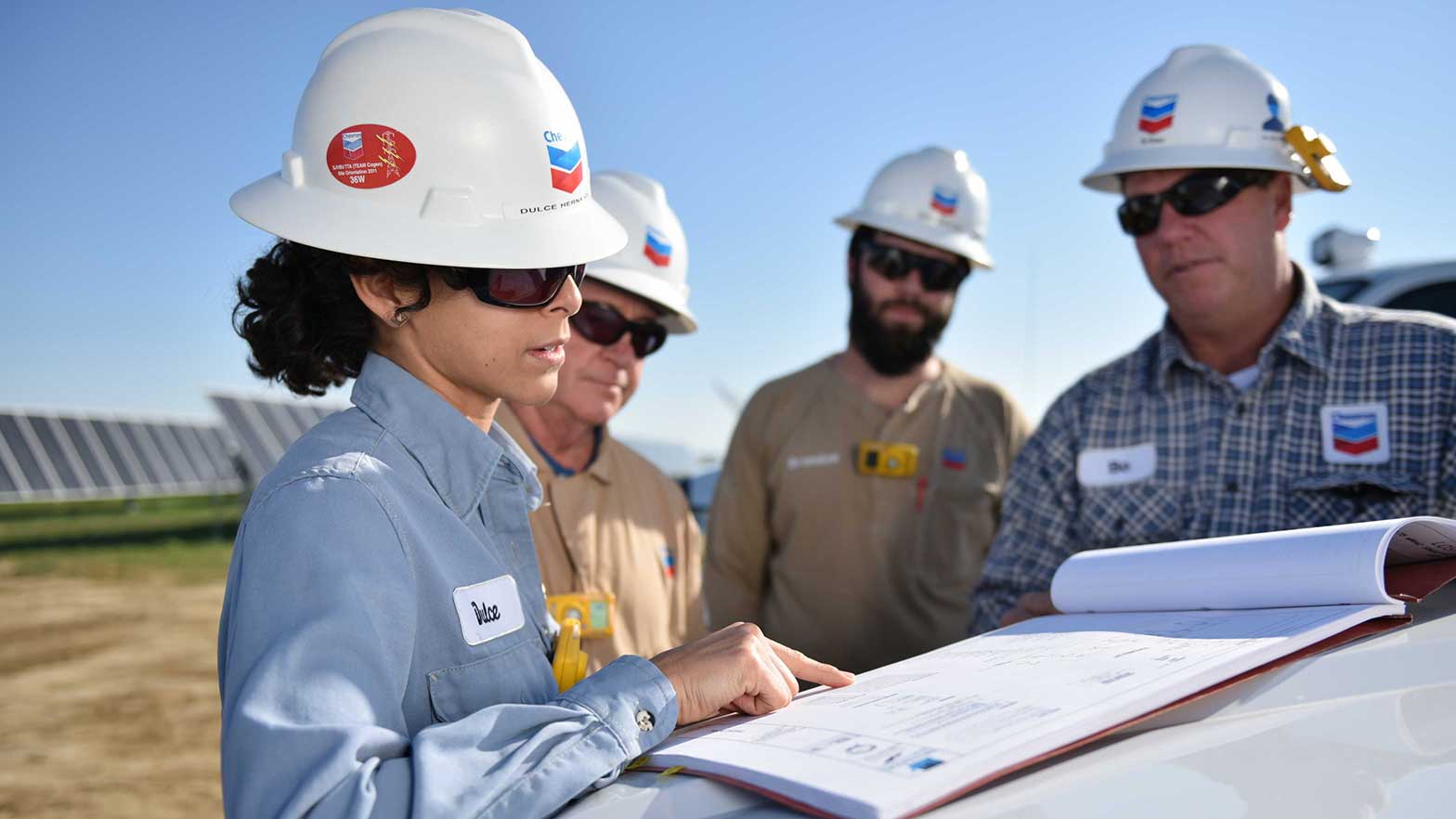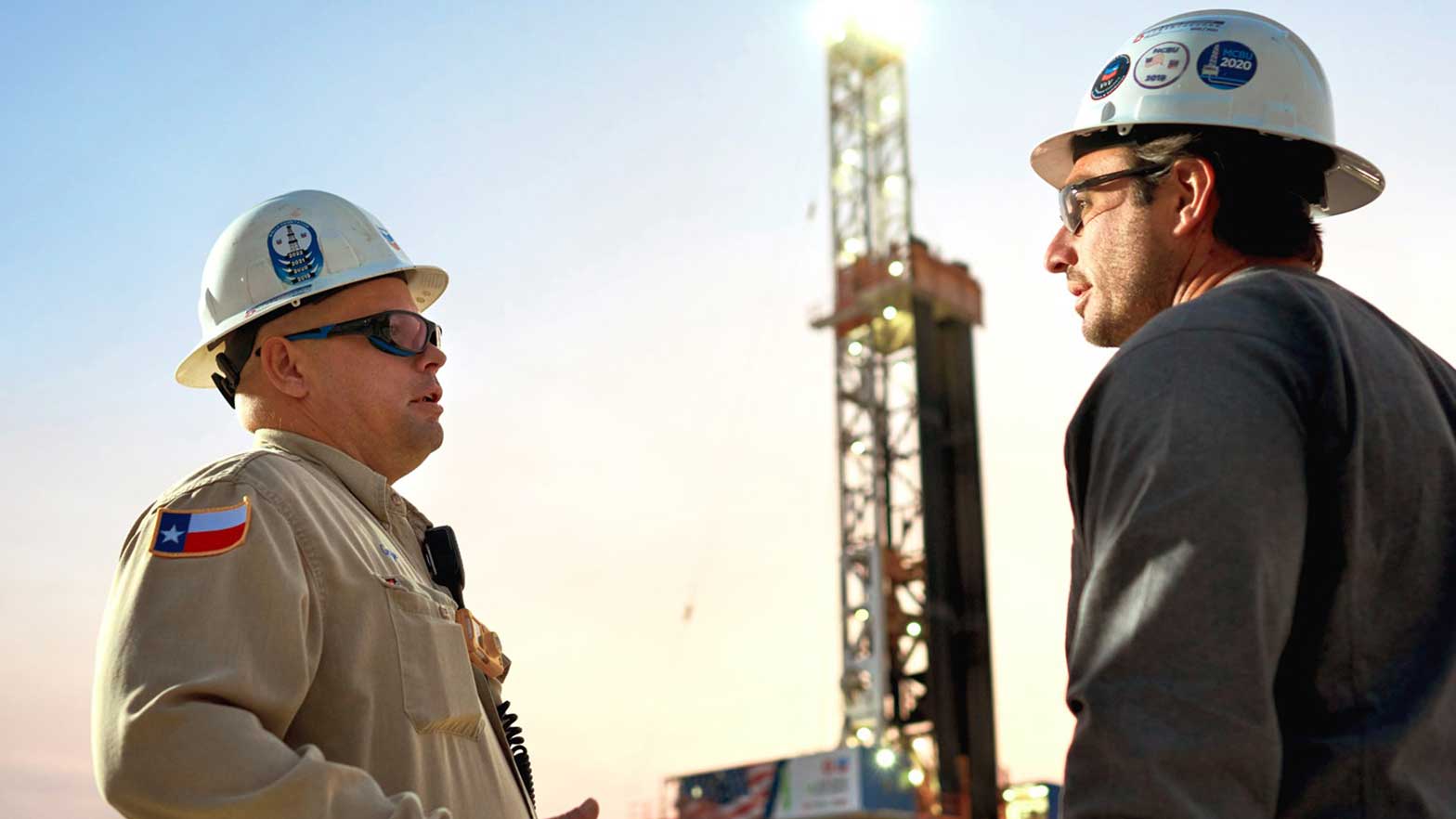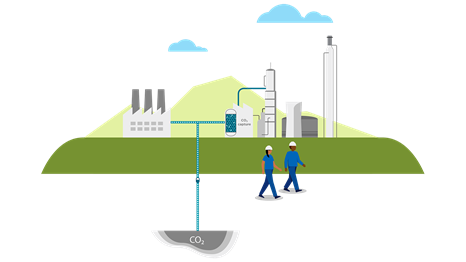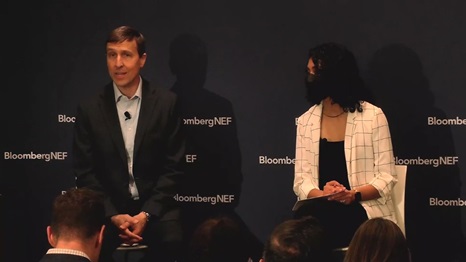our operations
explainer: 5 myths about the oil and gas industry
2 min read | march 31, 2023
A Chevron employee inspects machinery near Midland, Texas.
The energy industry is complicated and often misunderstood. In this article, we dispel five commonly held misconceptions about the oil and gas sector.
myth 1: the world no longer needs oil and gas
Demand for oil and gas is rising as the world’s population and production of goods expands. Energy security depends on reliable and secure sources that should include renewables as well as oil and gas.
- The International Energy Agency predicts that oil demand will continue to rise until at least 2026.
- The International Renewable Energy Agency forecasts that most of the world’s energy can come from renewable sources by 2050.

Workers at the Lost Hills solar project in California.
myth 2: oil and gas companies aren’t really reducing their emissions
At Chevron, we believe the future of energy is lower carbon.
We're building on our strengths as we aim to lead in lower carbon intensity oil, products and natural gas. Chevron is also advancing new products and solutions that reduce the carbon emissions of major industries. For example, we are:
- Developing and producing renewable fuels and reducing methane emissions and the carbon intensity of our operations.
- Collaborating with Japan's Mitsui Oil Exploration Company to explore the feasibility of advanced geothermal energy in Japan.
- Working with Algonquin Power & Utilities Corp. to build a solar energy project intended to generate renewable energy for our West Texas and New Mexico operations.
myth 3: companies don’t need permits to drill
Energy companies such as Chevron are required to obtain permits to drill on state, federal or private land.
Permits play a critical role in our ability to produce. Mike Wirth, our chairman and chief executive officer, called for an improved process to facilitate increased domestic operations.
“In the short term, permitting reform is the single thing that could enable not only the oil and gas industry, but the renewable industry to continue to grow supplies in this country,” Wirth said during a recent CNN interview.

Workers stand before a drill rig in the Permian Basin near Carlsbad, New Mexico.
myth 4: all U.S. oil comes from texas
While it’s true that Texas is considered the energy capital of the world, the Lone Star State is not the lone provider.
Chevron produces oil and gas around the world. Within the U.S., our operations span Texas, New Mexico, Colorado, California and the Gulf of Mexico.

Offshore nutritionist talking with cook in the kitchen onboard the Jack/St. Malo offshore platform in the Gulf of Mexico.
myth 5: the industry only hires engineers
Petroleum engineers represent just a portion of the industry’s diverse workforce. Geologists, doctors, marine scientists and environmentalists are part of a diverse spectrum of specialists who have found their calling in the energy industry.
We also employ nutritionists, helicopter pilots—and even a general manager of health and medical.
topics covered
related content
-
 explainer: what do we mean by hard-to-abate industries?
explainer: what do we mean by hard-to-abate industries?emissions solutionsmay 03, 2024
-
chevron’s first-quarter results highlight operational, financial strength
our operationsmay 02, 2024
-
 gathering and exporting gas is a win-win for reducing flaring
gathering and exporting gas is a win-win for reducing flaringour operationsmay 02, 2024
-
 $500 million investment in emerging lower carbon technologies
$500 million investment in emerging lower carbon technologiesour operationsapril 30, 2024
chevron email updates
Subscribe to our newsletter to receive news and updates.



